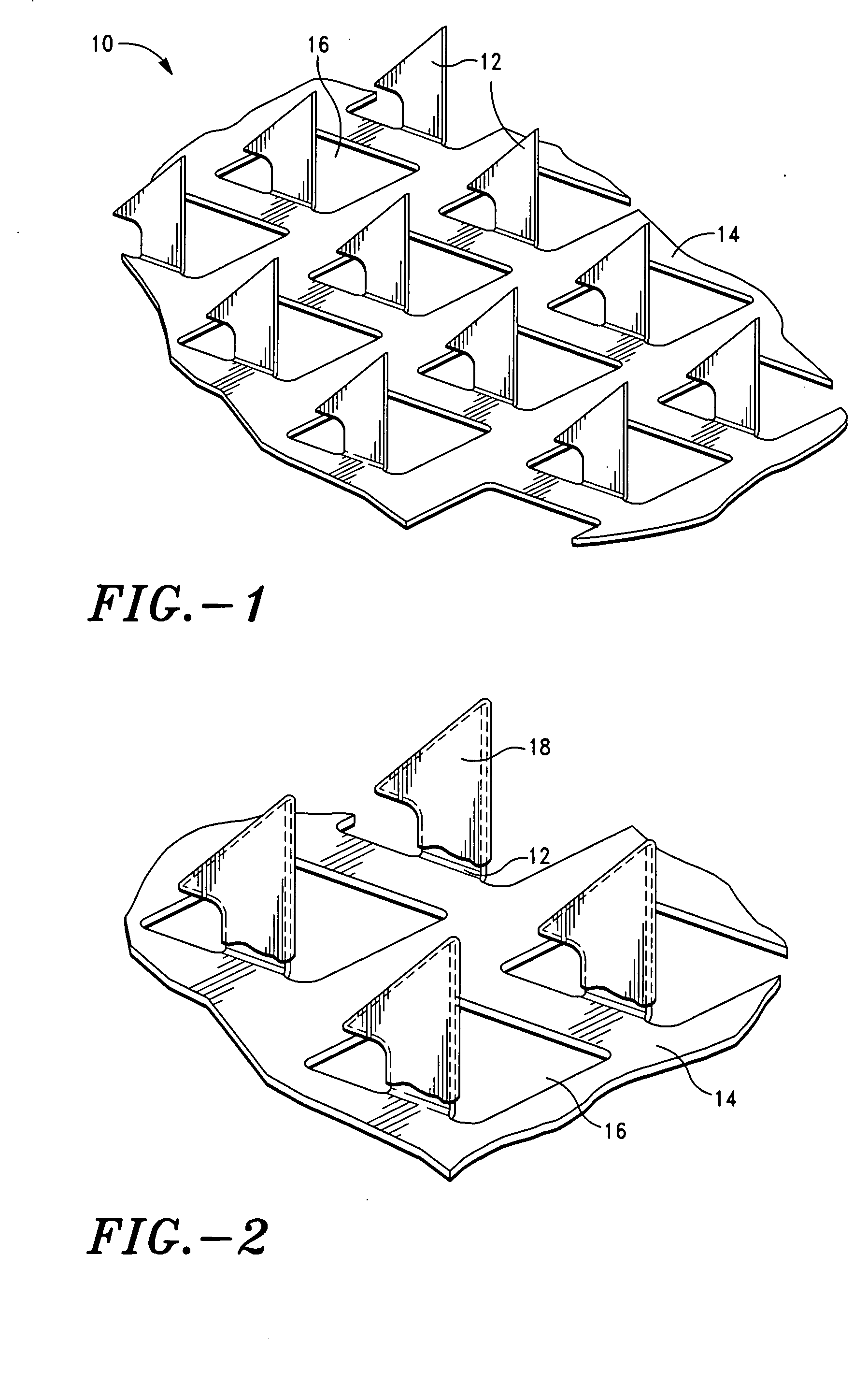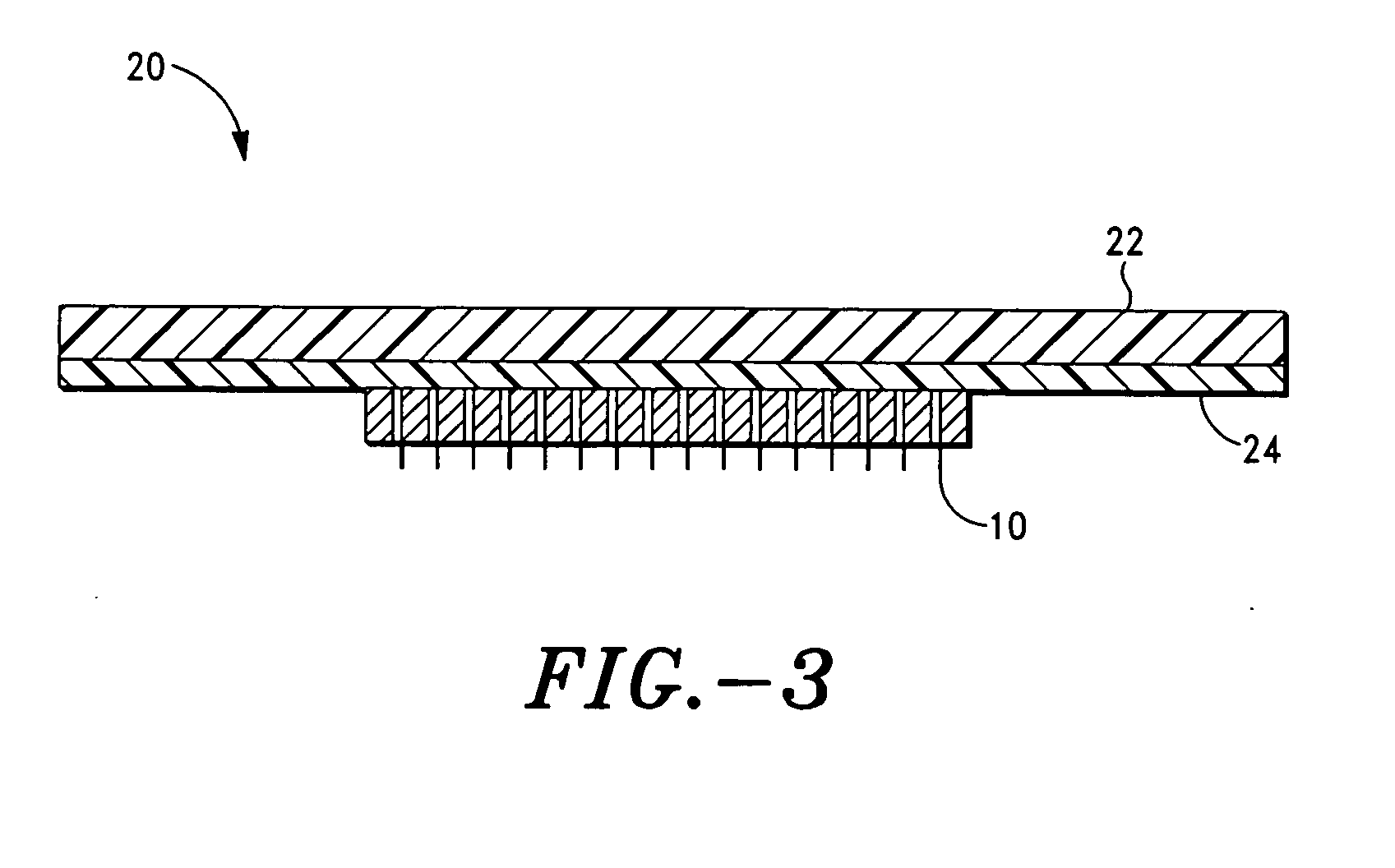Microprojection array immunization patch and method
a technology of immunization patch and microprojection array, which is applied in the direction of antibody medical ingredients, drug compositions, immunological disorders, etc., can solve the problems of limited application of passive transdermal delivery, high the use of conventional needles requires a very high level of eye-hand coordination and finger dexterity, etc., to achieve adequate buffering capacity
- Summary
- Abstract
- Description
- Claims
- Application Information
AI Technical Summary
Benefits of technology
Problems solved by technology
Method used
Image
Examples
example 1
[0192] This example investigates whether boosting with a lower dose minimizes the skin response while providing an adequate immune response. The general regimen consists of intradermally administering a large dose of the vaccine during the primary immunization followed by one or more intradermal booster immunizations with lower doses of the vaccine.
[0193] Experiments have demonstrated that up to 80 micrograms ovalbumin was delivered over the 1 hour application period. Bolus delivery (5 seconds application) resulted in about 25 micrograms delivered. These experiments further demonstrated that delivery of ovalbumin could be controlled by adjusting the amount of ovalbumin on the array.
[0194] Based on these results, two immunization regimens are effective for reducing the skin response. The first regimen involves administering the primary immunization and booster administration with identical coated microprojection arrays. However, the wearing time during the primary induction immuniz...
PUM
| Property | Measurement | Unit |
|---|---|---|
| time | aaaaa | aaaaa |
| time | aaaaa | aaaaa |
| contact area | aaaaa | aaaaa |
Abstract
Description
Claims
Application Information
 Login to View More
Login to View More - R&D
- Intellectual Property
- Life Sciences
- Materials
- Tech Scout
- Unparalleled Data Quality
- Higher Quality Content
- 60% Fewer Hallucinations
Browse by: Latest US Patents, China's latest patents, Technical Efficacy Thesaurus, Application Domain, Technology Topic, Popular Technical Reports.
© 2025 PatSnap. All rights reserved.Legal|Privacy policy|Modern Slavery Act Transparency Statement|Sitemap|About US| Contact US: help@patsnap.com


